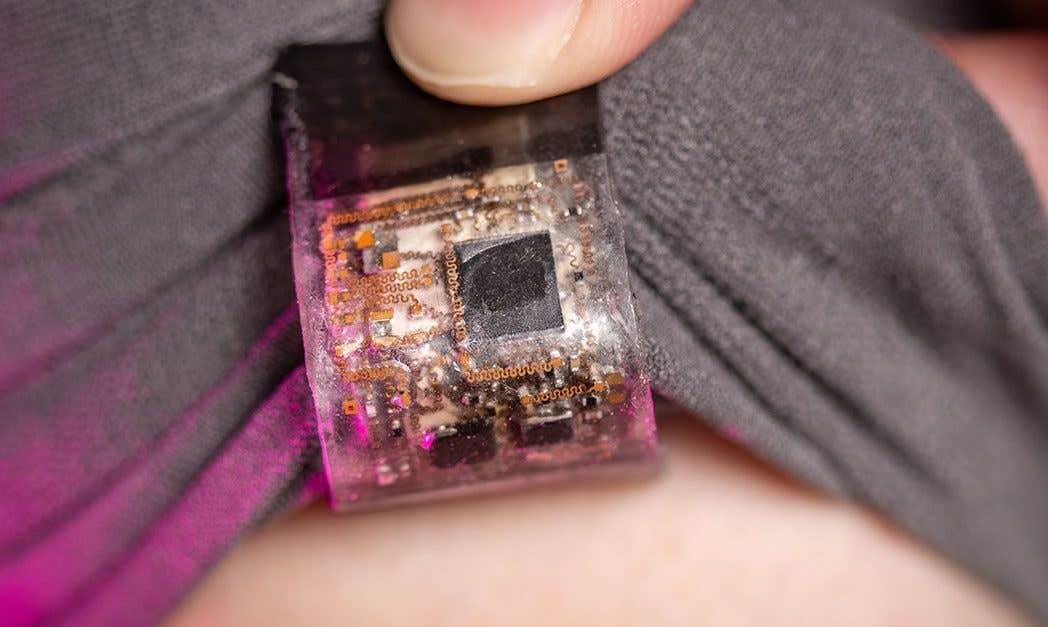Scientists make major breakthrough in our understanding of Parkinson’s disease
Parkinson’s disease is characterized by its distinctive motor symptoms: resting tremors, rigidity, and delayed movements.

[Oct. 26, 2023: Staff Writer, The Brighter Side of News]
Parkinson's disease is characterized by its distinctive motor symptoms: resting tremors, rigidity, and delayed movements. (CREDIT: Creative Commons)
In a transformative discovery, new research published in the journal Neuron reveals a new perspective on the underpinnings of Parkinson's disease, a debilitating neurodegenerative disorder that afflicts 1-2% of the world's population. This pioneering study suggests that the origins of the ailment might stem from the malfunctioning of synapses – the minuscule junctures that enable neuron-to-neuron communication.
Parkinson's disease is characterized by its distinctive motor symptoms: resting tremors, rigidity, and delayed movements. These symptoms trace their roots to the loss of dopaminergic neurons in a brain region named the substantia nigra pars compacta (SNc). These neurons are integral, as they produce dopamine, a pivotal neurotransmitter in the disease's narrative.
Historically, the prevailing belief in the scientific community was that the degeneration of dopaminergic neurons marked the inception of Parkinson's. Contrarily, this novel study contests this axiom, hypothesizing that dysfunctions at the synapses of these neurons might, in fact, precede their death.
Graphical Abstract: Neuronal activity triggers CaMK2-mediated activation of parkin at the synapse. (CREDIT: Cell)
This paradigm shift in thinking was catalyzed by a captivating case of two sisters, both bearing a genetic predisposition to Parkinson's due to a mutation in the PINK1 gene. While one sister was diagnosed at a tender age of 16, the other faced her diagnosis three decades later, at 48.
Dimitri Krainc, esteemed chair of neurology at Northwestern University Feinberg School of Medicine and director of the Simpson Querrey Center for Neurogenetics, who helmed the study, shed light on their approach, stating, “We encountered two sisters with Parkinson’s that had disease onset 30 years apart and we tried to explain this discrepancy by studying their genes.”
Further investigation revealed that the younger sister, aside from the PINK1 mutation, also had a partial loss of the parkin gene, prompting the scientists to explore if parkin played a more covert role in the disease’s progression. Krainc posed the tantalizing question, “There must be a complete loss of parkin to cause Parkinson’s disease. So, why did the sister with only a partial loss of parkin get the disease more than 30 years earlier?”
Related Stories
The genes PINK1 and parkin are instrumental in the cellular process of "recycling" aging or overtaxed mitochondria. This process, termed mitophagy, is pivotal because dysfunctional mitochondria can induce cellular anomalies. Impaired mitophagy, resulting from mutations in both PINK1 or parkin genes, is linked to Parkinson's onset.
For the study's methodology, the research team utilized patient-derived midbrain neurons, eschewing mouse models due to inherent physiological disparities between mouse and human dopamine neurons.
Their exhaustive investigations unearthed an uncharted role of parkin. Beyond its acknowledged recycling duty, parkin also functions in an entirely distinct pathway within the synaptic terminal, crucially governing dopamine release.
Synthesizing the research for the layperson, Krainc stated, “The findings indicate that Parkinson’s starts with dysfunction of the synapse much before neurons start degenerating.”
The findings indicate that Parkinson’s starts with dysfunction of the synapse much before neurons start degenerating. (CREDIT: Creative Commons)
This eureka moment in Parkinson's research could potentially revolutionize therapeutic interventions. If clinicians could target the dysfunctional synapses preemptively, before neuronal decay, there exists the potential to more effectively manage or even mitigate Parkinson's crippling symptoms.
However, Krainc interspersed his optimism with a note of caution, underscoring the embryonic stage of this discovery. “We need to find a way to target such synaptic dysfunction therapeutically as early as possible,” he cautioned. It's evident that a pragmatic therapy rooted in this research is still in its gestational phase, necessitating additional research.
Schematic diagram of corticostriatal synapse in healthy condition (A) and in patients with PARKIN mutations (B). The figure shows the interaction of parkin with KAR and NMDAR and potential changes induced by loss of PARKIN function. (CREDIT: Frontiers)
The ramifications of this study are monumental. It accentuates the gravity of comprehending Parkinson's genetic foundations on an individual basis. Krainc's advice to the medical community is unequivocal, “It is important to examine the genes of each patient with Parkinson’s because knowing the genetic basis of the disease helps with therapeutic strategies.”
The seminal study, entitled “Parkinson’s disease-linked parkin mutation disrupts recycling of synaptic vesicles in human dopaminergic neurons“, boasts a diverse roster of contributors including Pingping Song, Wesley Peng, Veronique Sauve, among others, culminating under the guidance of Dimitri Krainc.
Note: Materials provided above by The Brighter Side of News. Content may be edited for style and length.
Like these kind of feel good stories? Get the Brighter Side of News' newsletter.



